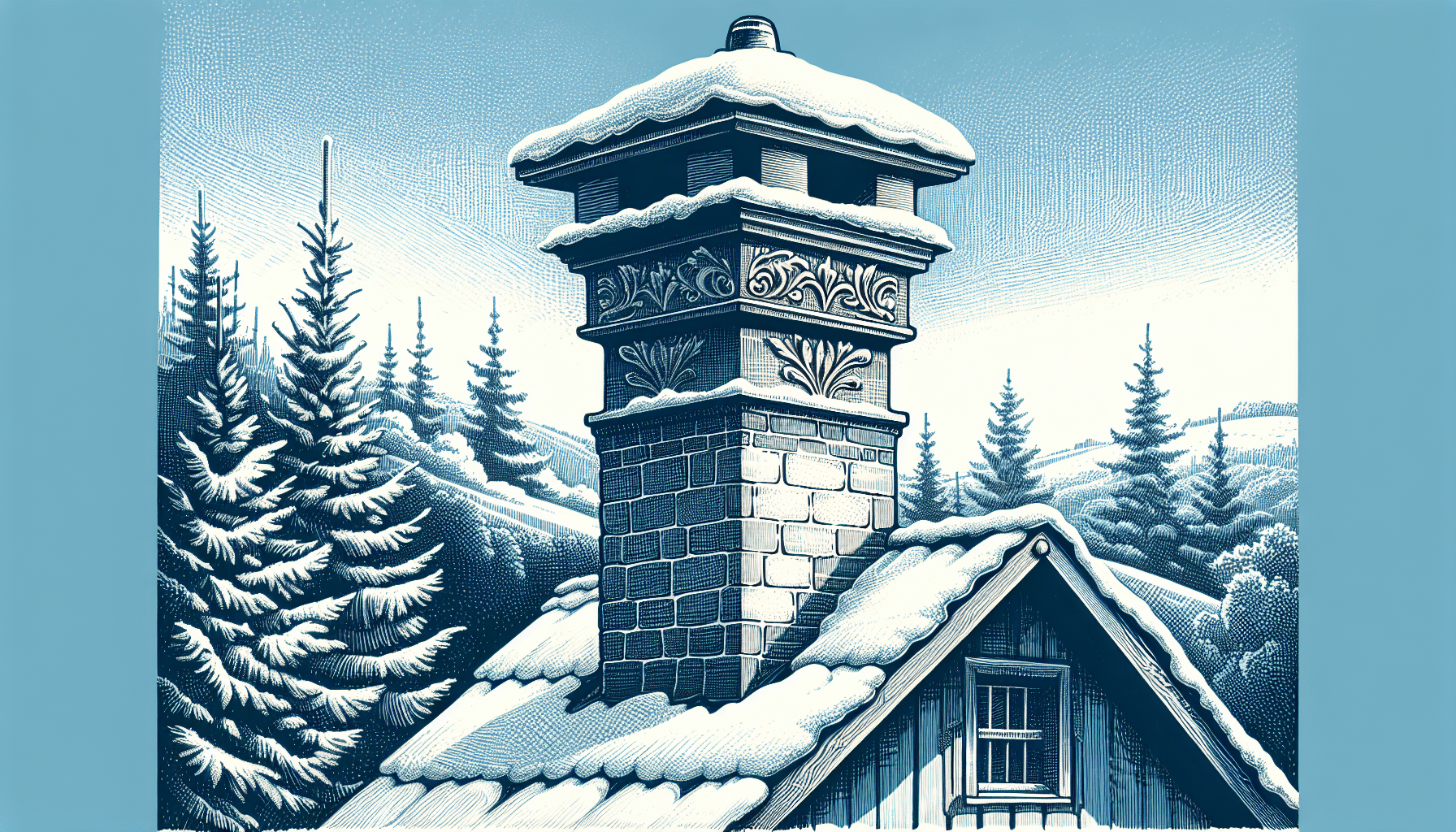How often have you found yourself curled up by a warm, crackling fireplace, enjoying the ambiance it creates? It’s a cozy picture, isn’t it? However, the joys of a fireplace come with responsibilities, especially regarding ventilation. Properly venting a fireplace is essential not only for the effectiveness of heat but also for your safety and the integrity of your home. Let’s delve into the ins and outs of fireplace venting together!
The Importance of Proper Ventilation
You might wonder why ventilation is such a critical issue. Well, the primary purpose of venting is to provide a safe and efficient way for smoke and gases to escape your home. Inadequate venting can lead to dangerous situations, such as carbon monoxide buildup, smoke damage, or even house fires. Who wants that, right?
Additionally, proper ventilation ensures your fireplace operates optimally. A well-vented fireplace offers better combustion rates and keeps your living space warm without making you feel like you’re sitting in a smokehouse. It’s a win-win, really!
Types of Fireplaces
Understanding the types of fireplaces you might have is the first step toward ensuring proper venting. Here’s a quick rundown:
| Type of Fireplace | Description |
|---|---|
| Wood-burning Fireplace | Traditional option; produces smoke that needs venting |
| Gas Fireplace | Uses gas logs or inserts; often vented through the wall |
| Ventless Fireplace | Does not require a vent; burns cleanly but may not meet all safety requirements |
| Pellet Stove | Burns compressed wood pellets; requires venting but is often more efficient |
Each type has its own way of managing smoke and gases, so knowing what you have is crucial to taking the right steps.
Venting a Wood-Burning Fireplace
If you have a wood-burning fireplace, you’re in for a treat when it comes to warmth and ambiance. However, it also demands specific attention regarding venting. Here’s how to ensure your wood-burning fireplace is sufficiently vented:
Chimney Basics
A chimney is an essential component in venting a wood-burning fireplace. It creates the necessary draft to pull smoke and gases out of your home.
-
Chimney Height: The height of your chimney plays a vital role in how efficiently it vents smoke. Ideally, the top of your chimney should be at least three feet above the roofline and two feet taller than any structure within ten feet. This height helps create adequate draft.
-
Chimney Flue: This is the passage that carries smoke out of your fireplace. Make sure it’s the right size for your fireplace—typically, the flue should match the size of the fireplace opening.
-
Chimney Cap: Adding a chimney cap can prevent rain, debris, and animals from entering the chimney. It also helps improve draft and protects your home.
Cleaning Your Chimney
Regularly cleaning your chimney is a must! Creosote, a flammable substance, can build up on the flue, which is a significant fire hazard. Aim to have your chimney inspected and cleaned at least once a year.
-
DIY Cleaning: If you’re adventurous, you can clean your chimney using a chimney brush and a vacuum. Just ensure you have a good ladder and some tools handy.
-
Professional Inspection: If you’re unsure or don’t want to tackle it yourself, hiring a professional is wise. They can detect issues you might miss and ensure everything’s in safe working order.
Venting a Gas Fireplace
Gas fireplaces are typically more straightforward concerning venting, but they still come with their own nuances. Let’s break it down!
Direct Vent vs. B-Vent
Gas fireplaces generally use one of two venting types:
-
Direct Vent: This type uses two pipes – one for intake and the other for exhaust. It pulls air from outside for combustion while venting the exhaust back outside. This system is efficient and minimizes heat loss.
-
B-Vent: This traditional method uses a single pipe to vent exhaust gases, drawing in air from the room for combustion. This might not be as efficient as direct vent systems, yet it remains a common choice.
Vent Size and Installation
-
Sizing the Vent: Ensure your vent is appropriately sized according to the manufacturer’s specifications. An undersized vent can lead to incomplete combustion and dangerous gas buildup.
-
Installation Guidelines: Follow all installation guidelines from the manufacturer. If you’re uncertain, consulting a professional contractor with experience in gas appliance installation can save you time and headaches down the road.
Regular Maintenance
Keeping your gas fireplace maintained is key. Although they require less frequent cleaning than wood-burning stoves, you still need to check for signs of wear or damage.
-
Check for Blockages: Every few months, ensure there’s no debris blocking the vent pipe. This can include nests or leaves, which could cause significant issues.
-
Annual Checkup: Have a professional technician inspect your system at least once a year, ensuring everything runs smoothly.
Ventless Fireplaces: Are They Safe?
Ventless fireplaces are becoming increasingly popular for their aesthetics and ease of installation. They burn cleanly, making them efficient for heating a space. But are they entirely safe? Here’s what to consider:
How They Work
Ventless fireplaces burn gas with minimal emissions, using the oxygen in the room for combustion. This lack of venting means they don’t require installation through walls or ceilings, making them versatile.
Safety Concerns
While they can be efficient, ventless fireplaces come with caveats:
-
Carbon Monoxide Buildup: Poor ventilation can lead to the accumulation of carbon monoxide in your space. To mitigate this, always ensure the room is adequately ventilated, especially during extended use.
-
Moisture Issues: Burning gas produces water vapor. Excessive moisture can become a problem, leading to mold and mildew if the space isn’t well-ventilated.
-
Oxygen Depletion Sensors: Many ventless models come with oxygen depletion sensors that shut off the unit if oxygen levels drop, but these are not a substitute for proper ventilation.
When Not to Use
If you’re in a tightly sealed space without windows or good airflow, ventless fireplaces may not be the best choice. Always ensure that adequate ventilation is available when considering a ventless option.
Venting a Pellet Stove
For those of you who prefer the efficiency and sustainability of a pellet stove, venting is equally important! Let’s have a look.
Understanding Pellet Stove Venting
-
Direct Vent: Similar to gas fireplaces, pellet stoves often utilize a direct vent system. This means they can vent vertically through a chimney or horizontally through an external wall.
-
Vent Sizing: Proper sizing is crucial for optimal performance. The exhaust diameter typically depends on the stove’s specific model and output.
Installation Nuances
-
Follow Manufacturer Guidelines: As with gas and wood-burning stoves, always follow the manufacturer’s specifications for installation to guarantee safety and efficiency.
-
Maintenance: Regularly clean the venting system to remove ash and soot that can build up, impacting performance and safety.
Annual Inspections
Just like the other fireplace options, a yearly inspection by a professional can catch any issues that might arise over time, keeping you warm (and safe) through the colder months.
Common Mistakes in Fireplace Ventilation
Living with a fireplace can sometimes lead to missteps, and it’s good to be aware of common pitfalls. Here are a few to watch out for:
Ignoring Regular Maintenance
Forgetfulness about cleaning and maintenance can lead to dangerous situations. Don’t wait for a warning sign to get your fireplace checked out!
Improper Sizing of Venting Systems
Whether a wood fireplace flue or a gas vent, proper sizing is vital. Larger isn’t always better, but undersized venting can cause significant issues.
Overlooking the Importance of Carbon Monoxide Detectors
If you use any fuel-burning appliance, installing carbon monoxide detectors in your home is crucial. It’s a simple measure that can save lives.
Not Understanding Local Codes
Local building codes can dictate how you should vent your fireplace, especially for gas and wood-burning units. Always stay informed!
Conclusion
In conclusion, knowing how to properly vent your fireplace not only protects your home but also enhances efficiency and safety. Whether you have a wood-burning, gas, ventless, or pellet stove, understanding how these systems operate is vital.
Taking proactive steps—such as regular maintenance, proper installation, and adherence to safety guidelines—will keep your fireplace experience cozy, warm, and wonderfully enjoyable. So go on and make the most of those chilly evenings by the fire. You deserve all the warmth and joy it brings!

